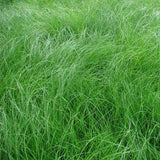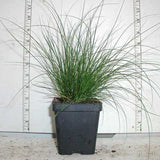Carex appalachica - 3.5 inch Pots (Minimum Quantity: 25 Plants)
Carex appalachica, commonly known as Appalachian Sedge, is a fine-textured, clump-forming native grass that thrives in dry, shady conditions. Its delicate, arching green blades create a soft, flowing effect, making it an excellent choice for naturalizing woodland gardens, edging pathways, or replacing traditional turf in low-traffic areas. This low-maintenance sedge is highly adaptable, drought-tolerant once established, and provides year-round interest with its graceful foliage.
Looking for an easy-care ground cover for shade? Carex appalachica is a great alternative to traditional lawns, requiring little water or upkeep while offering a lush, natural look. Whether used in mass plantings, under trees, or in native plant gardens, this resilient sedge brings beauty and ecological benefits to any landscape. Add Appalachian Sedge to your garden today for a simple, elegant solution to shady spaces!
Name(s): Carex appalachica, Appalachian Sedge
Flower Color: Insignificant
Bloom Time: Spring
Foliage: Dark green, grassy, arching.
Height/Spread: 8 inches to 10 inches x 12 to 15 inches.
Climate Zones: 3, 4, 5, 6, 7, 8
Find Your USDA Plant Hardiness Zone By Zip Code
Sun Exposure: Partial shade to full shade.
Soil Condition: Well-drained, loamy, pH 5.6 to 7.5
Features: Graceful foliage, deer resistant, drought-tolerant.
Uses: Massed planting, naturalizing, shade gardens, woodland gardens, container gardens, lawn substitute, native plant collections, butterfly habitat.
Comments: Carex appalachica - also known as Appalachian Sedge - is native to the Eastern U.S. It has fine, dark green foliage up to 12" long. Blades are evergreen in Southern states. Spreading slowly by underground rhizomes it produces a fine ground cover in dry shade. White flowers in late Spring are followed by seed heads. Though insignificant, they add interest and texture.
Carex appalachica will grow in average, medium to dry soil. It will tolerate some drying out. Use for ground cover, mass plantings, naturalizing, erosion control on slopes, borders, lawn substitute in dry shade and woodland areas. In its natural habitat, it's often found growing under oak trees.
Carex is known to host many butterfly species. Among them are Black Dash and Northern Broken Dash, several skippers such as the Broad-Winged Skipper, Dion Skipper, Dun Skipper, Tawny-edged Skipper, and the Common Wood Nymph butterfly. Host plants provide food and sheltered places for egg-laying.
We can not ship this item to Alaska, Arizona, California, Hawaii, Nevada, Oregon and Washington.









